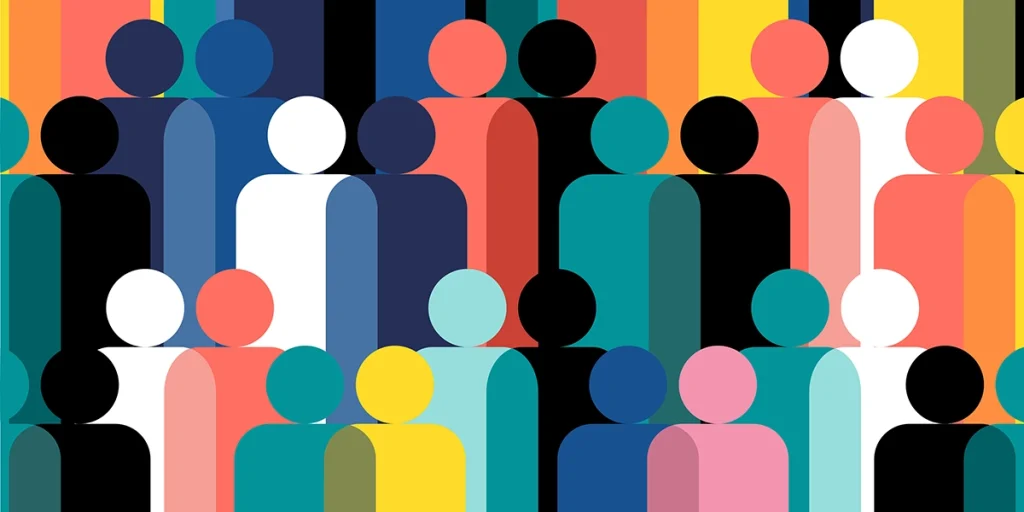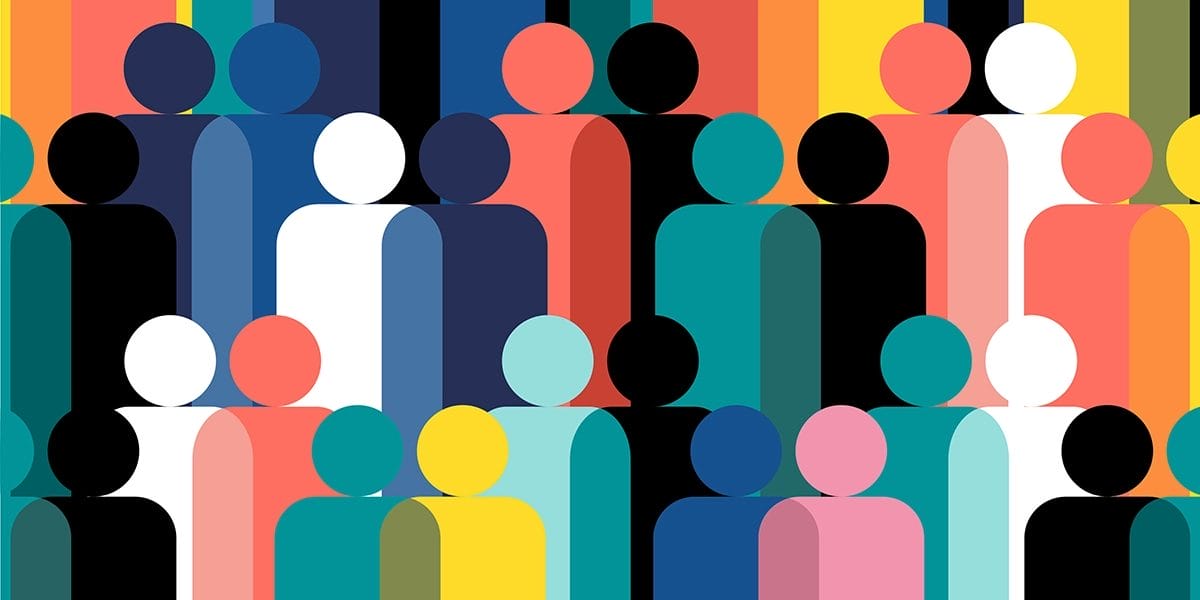Welcome to the 2nd article in this mini-series focusing on Community in the context of MILEs. This time, we are going to explore basic theory around community participation.
Community styles
Interactive streams and MILEs can lead to a variety of communal molds. Looking at these briefly:
- [Me and Them] – This is a common setup, where I am aware of myself as an individual and everyone else is the same. We are all in the same environment and usually given similar means to participate, usually in a manner that aims to focus on the self.
- [Me and Us] – Similar to the above, but focused on the collective outcomes over individual ones.
- [Me, Us and Them] – While participants are still acting individuals, each one is part of a team or group. As a result, we have individuality, my group and their group(s).
- [Us and Them] – You can also strip the individuality component and just have participants be part of a team. While actions are from individuals, the result is that these actions are entirely measured from the community.
- [Us] – Purely communal without any individual impact / dialing down the sense of self.
It’s worth highlighting the [Me and Us] option – without needing any further work by the participant past understanding what the MILE is about, you are immediately connected to everyone else in the group while retaining individuality. There are quite a few natural tendencies to offer factions / teams (which do have some value) but early on, the [Me and Us] model is a great choice in the dark.
The best advice remains as always to choose a style that matches the experience you are designing.

Chat & non-verbal communication
A lot of interactive streaming experiences use chat – it leverages older technology is a way that matches live relatively well. Having chat is typically trivial, built-in within the platforms already and digital audiences understand it.
Chat remains a limited tool; with only a small percentage of users (shy of 15% at best, often lower) using chat to communicate during these experiences. While the rest of the audience can gain energy observing chat, there is a portion of members that may enjoy interacting but don’t want to engage in chat.
By offering tools that allow for non-verbal communication, you are allowing more members of your audience to communicate and have a voice. Unlike written communication that is rooted in global codes, you can custom-design this style – it’s more work, but also tailor-made by your design team that can create a truly special experience. We highly recommend not just rely on chat – open up the ways in which people can communicate with each other and create experiences unlike any other that will keep them talking for years.
In very simple terms – “Fireworks go BOOM” is an easy to understand concept and appreciated by most viewers, so aim to leverage similar ones, let participants have fun with the reins and let it ride.

Prosocial
This article is going to advance that MILEs, by nature, tend to be prosocial as they are about collectives acting together and sharing the same experience. This tends to lead to less disruptive behavior by nature and is a benefit of the medium compared to traditional multiplayer we see in gaming. It’s hard to accumulate frustration as the focus is less on individual agency and more collective outcomes.
One of the strengths behind MILEs is a strong ability to fulfill a sense of belonging amongst strangers, as the underlying technology allows for a variety of non-verbal communication tools permitting cross-lingual activities.
Here is a short checklist of what to look out for that can lead to issues:
- Adding a skill-based gate of any kind, whether individual or communal (with the exception of opt-in high-end individual skill such as top-placement leaderboards, since the percentage of users engaging at these levels is very small and it creates a communal experience beyond its direct participants)
- How important and solicited individual input is, with high requirement levels capable of leading to frustration;
- How much social or participant damage a single account can cause to others (elements like chat tend to be high-risk, while a controlled set of emoticons that can be spawned would be near zero risk; a participation example would be resource accumulation and dumping)
- If users can band together to cause damage (social or participation)
As this is too short a write on this topic that cannot do justice on prosocial entertainment experiences, you can read much more by checking out the Polaris Game Design Retreat, a long but worth reading analysis on the topic within the video games space that has transferable knowledge – Kind Games: Designing for Prosocial Multiplayer – Polaris Game Design Retreat

Audience expectations, and setting them
Before you sit down to watch a show, play a game or anything related to entertainment, there is usually context – a friend talked about the experience, there was a trailer, a “back of the box” was read, etc. While these are meant to sell the experience, they also aim to set expectations so that the right person takes part.
Reviews are usually paramount to the success of modern entertainment products.
By their nature, interactive streams and MILEs benefit from “in the moment” value that can reduce the importance of reviews but you still want people attending to at least have a reasonable expectation of what they will live through so that when they eventually leave the experience, they can communicate about it in a manner that is clear and, hopefully, positive.
A key learning from online multiplayer games is that low enjoyment from a participant can be transmitted to others – mismatching of expectations combined with the ability to affect how others live their experience is a recipe for disaster.
Thank you for reading this article on some of the theory behind community and social dynamics considerations in MILEs. The next article will look at some practical examples.
In the meantime, you can join our Discord server to discuss the material.


